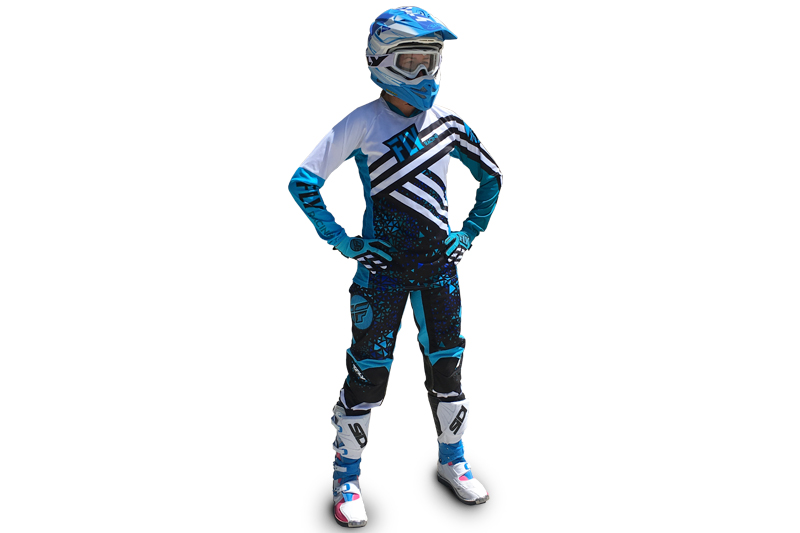So you’ve given it a try, and you decided this whole dirt bike thing is pretty fun? Right on, we’re right there with you!
Now for the painful part: a lot of your street riding gear isn’t going to translate well into dirt riding, especially if you plan on really getting into it. Your best bet is to make an investment in proper dirt gear, just like you did when you started on the street.
There’s a lot out there to choose from, and if you’re like I was when I first started, you’re being confronted with unknown brands and terminology and maybe a little unsure of where to start. We’re here to help, with tips for choosing your gear and even a complete rundown of my personal dirt bike kit.
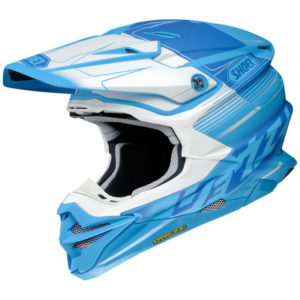
Helmet
Just like on the street, your lid is probably the most important piece of dirt gear you’ll buy. Dirt bike helmets have a long visor, or “peak,” that’s designed to keep the sun out of your eyes and “roost”—rocks and debris thrown up by the rider in front of you—off your face. Look for one that’s adjustable so you can position it just the way you like.
They also have a large eyeport that allows goggles to fit. Try your helmet on with goggles so you make sure they both fit, especially if you wear a small or extra small helmet.
The chinbar, meanwhile, should include a removable (and washable and/or replaceable) foam insert. That thing will get nasty over time, as it catches all the dust and dirt before you can inhale the stuff.
Look for plenty of vents as well—super important for keeping you cool.
My helmet: Shoei VFX-EVO with M.E.D.S., Shoei’s proprietary rotational force protection system. This cutting-edge technology protects you not only from direct impact, but also rotating hits that can cause brain damage. It ain’t cheap, but my head is pretty important.
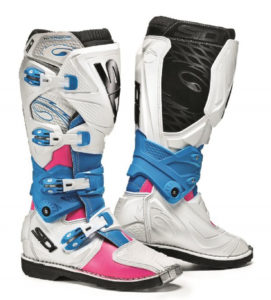
Boots
The second most important piece of dirt gear is your boots. Off-road boots have thick, very stiff soles and heavy armor, especially at the ankle and shin. All of that is intended to protect your lower leg from injury when you land that sick jump standing on the pegs or plant your foot on a tricky section of trail—or fall off, which WILL happen.
The most common failure point on a boot is at the buckles, so look for quality hardware and strong plastic. It should take some effort to snap them down and pull them open again.
More expensive boots will have articulating ankles and calves for greater movement and comfort. Make sure yours have a wide enough calf to buckle securely around your leg AND knee/shin armor. This is a common complaint, so try boots on before you buy!
You’ll probably feel like an astronaut the first time you wear dirt boots, but don’t worry, you get used to them. You may need to adjust your shift and rear brake levers up to make it easier to use them with your new bulky footwear.
My boots: Sidi X-3 Lei. These boots are da bomb. Seriously. They’re articulated and (relatively) easy to walk in, and broke in after just a day. Plus they look the business. I also like the metal toe guard and the sole, which can be replaced. In fact, all the bolt-on parts are replaceable, so these boots should last through years of use and abuse.
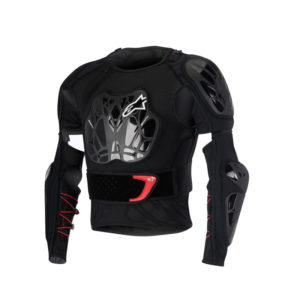
Body
If you’re doing serious dirt riding or MX, you’ll want to pick up some body protection and a jersey/pants set. Some girls like to ride with just a roost guard (plastic chest plate and small plastic shoulder guards, sometimes with a plastic back plate) over their jersey, but I don’t like pain so I wear a full upper body armored shirt and padded shorts.
My upper body armor: Alpinestars Bionic Tech Jacket. CE-rated hard armor at the chest, elbow/forearms, shoulders and back is incorporated into a zip-on mesh shirt for full protection. Women’s specific versions (read: designed for boobs!) are also available.
You’ll also want to get a set of knee guards and hip armor. I use Dainese knee/shin guards both on- and off-road, and they are super comfortable and fully articulated. Prevent chafing by wearing a thin pair of tights or yoga pants under them.
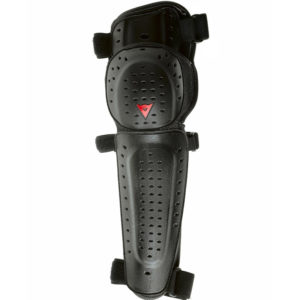
Your jersey and pants combo is strictly for looks—buy whatever you like! I matched up with my blue Shoei helmet and white/blue/pink Sidi boots with this setup from Fly. (Also shown in the main photo.)
Can you ride in jeans? Sure! Just remember to strap on some knee guards over them (trust us, you’ll be happy you did if/when you fall) and make sure they tuck into your boots without being too uncomfortable.
Alternatively, if you’re going to be doing more dual-sport riding, a two-piece ADV suit is the way to go. I love my Spidi 4Season suit, but there’s good stuff out there from Klim, Rev’It, Olympia and many more. Just look for plenty of vents, pockets and of course good armor (including a back protector).
Goggles/Gloves
Most people just match up their googles and/or gloves with their other gear; for example, I got Fly goggles and gloves to match my jersey and pants. Go with whatever fits you and is comfortable.
Speaking of fit, consider going up a size in the jersey and pants to accommodate the armor you’ll be wearing underneath!
Lastly, look to other ladies for advice on gear. Ask friends who ride dirt what they wear and what works for them. Lurk on forums. Read awesome articles like this one. 🙂 There’s more female-specific gear out there than ever, and more women riding dirt, so you’re sure to find some kit that works for you.


